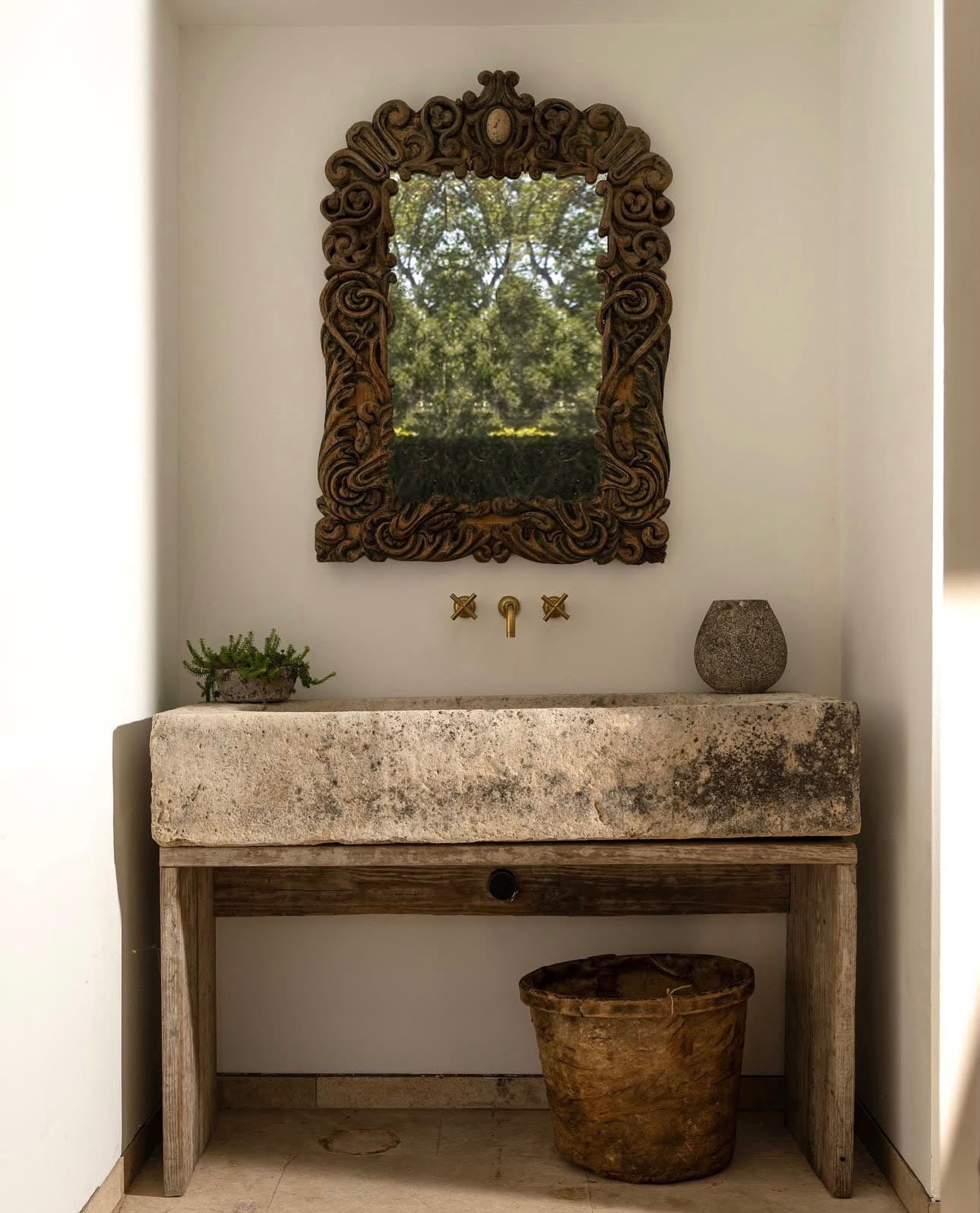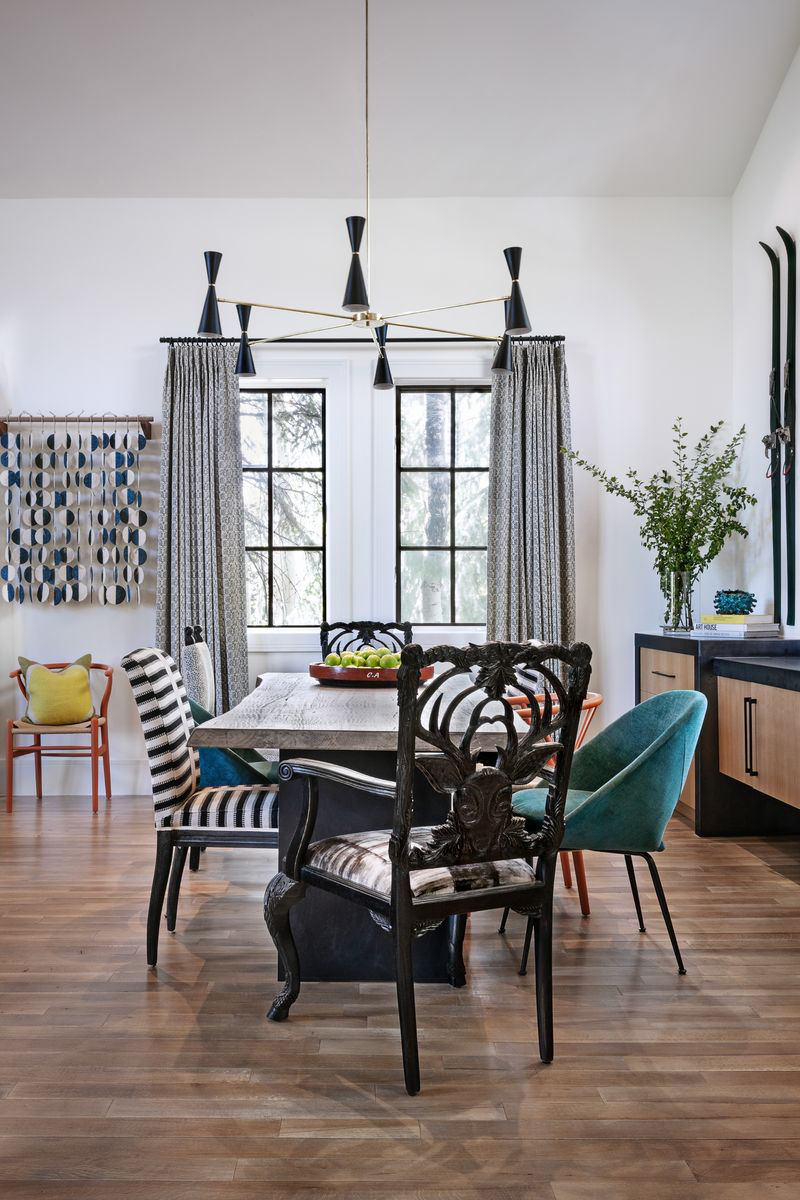Interior design is constantly evolving, adapting to current trends while holding onto age-old traditions. With so many buzzwords and ideas out there, what are the “rules,” exactly? And which ones are meant to be broken? I tapped a few experts to break it all down.
“Homes should feel like good friendships—layered, interesting, a little unpredictable, and full of stories,” says Shane Brown, founder of the beloved California design destinations Big Daddy’s Antiques and The Well. “Taste. Flavor. Character. That’s my secret.”
Below, Shane and more West Coast designers share what to do when you throw out the rulebook.
Courtesy of Big Daddy’s Antiques
Rule: Keep it neutral and play it safe.
Neutral color palettes are popular for a number of reasons. People often gravitate toward soft beiges and grays to create a calming effect, while others stick with them because they feel “safe.”
“Safe is boring,” Shane says. “Safe is what you do when you don’t trust your own taste. Everyone’s chasing ‘timeless,’ and they often end up with rooms that look like waiting areas in a luxury dental office.”
If you can’t part with neutrals, your best bet is to tell a story through carefully selected pieces. Shane’s rule of thumb? Aim for at least 60 percent vintage or antique in any room.
“Vintage is what gives a space its heartbeat,” he says. “It brings grit, history, personality. Your home should tell your story—not the story of a big box retailer’s spring catalog.”

Courtesy of Big Daddy’s Antiques
Rule: Outdoor furniture belongs outside.
High in quality and durability, outdoor furniture is designed to withstand the elements—but that doesn’t mean it can’t exist inside. Shane adds that some of the best indoor pieces he’s ever used were rescued from gardens, beaches, and European courtyards.
“A patio chair doesn’t know it’s a patio chair,” he says. “They’ve lived. They’ve aged. That’s called patina, and you can’t manufacture that feeling.”
Shane recommends bringing these unexpected pieces into your home for a nod to nature.
“Perfection is overrated,” he says. “Bring those pieces inside. Let them bring in the energy of nature, sun, and time. A weathered stone urn in a living room will do more for your space than a brand-new console any day. It’s not about perfection—it’s about presence.”
Rule: You shouldn’t mix furniture from different eras.
Mixing design eras is controversial, but so many designers encourage getting creative while maintaining a sense of cohesion. In fact, Stephanie Hunt, a Salt Lake City-based designer and founder and creative director for The Flairhunter, refuses to adhere to one time period or architectural style.
“That’s a bit one-dimensional, and if your home is a reflection of your personality, no single person on Earth is one-dimensional,” Stephanie says.
As an alternative, Shane uses the example of a centuries-old French apothecary cabinet next to a sleek, contemporary sofa. “That’s not a clash—that’s chemistry,” he says. “If everything matches, you’re not designing—you’re staging.”

Stephanie Hunt/The Flairhunter
Rule: Metals and wood tones must match.
Echoing this matchy-matchy concept, you shouldn’t fret about finding identical finishes, says Anita Yokota, therapist-turned-designer and author of Home Therapy.
“Layering mixed finishes and imperfect pieces builds psychological safety and a sense of belonging,” she says. “Nature shows us this, too! Contrast and imperfection are what make an ecosystem thrive. My rule is simple: If it feels grounded, it works. A space should regulate your senses, not perform for others.”
Several more designers agree. Stephanie says she’s even created a collection of mismatched chairs in a dining room, and Rachel Brown, founder and principal of RB Interiors calls matching “the enemy of magic.”
“I love tension—old with new, shiny with matte, structured with wild,” Rachel says. “Once you know the rules, you owe it to yourself to break them beautifully.”
Rule: Every room needs a bold focal point.
Anita designs with emotional health in mind, and notes that constant stimulation keeps your nervous system on alert.
“Instead, I design for emotional rhythm,” she says. “Spaces that exhale, just like nature does. In nature, there’s no single element demanding attention; beauty comes from harmony. The way light moves across leaves, how textures and tones shift softly with time. Our homes should mirror that same cadence.”
We only recommend things we love. If you buy something through our site, we might earn a commission.


